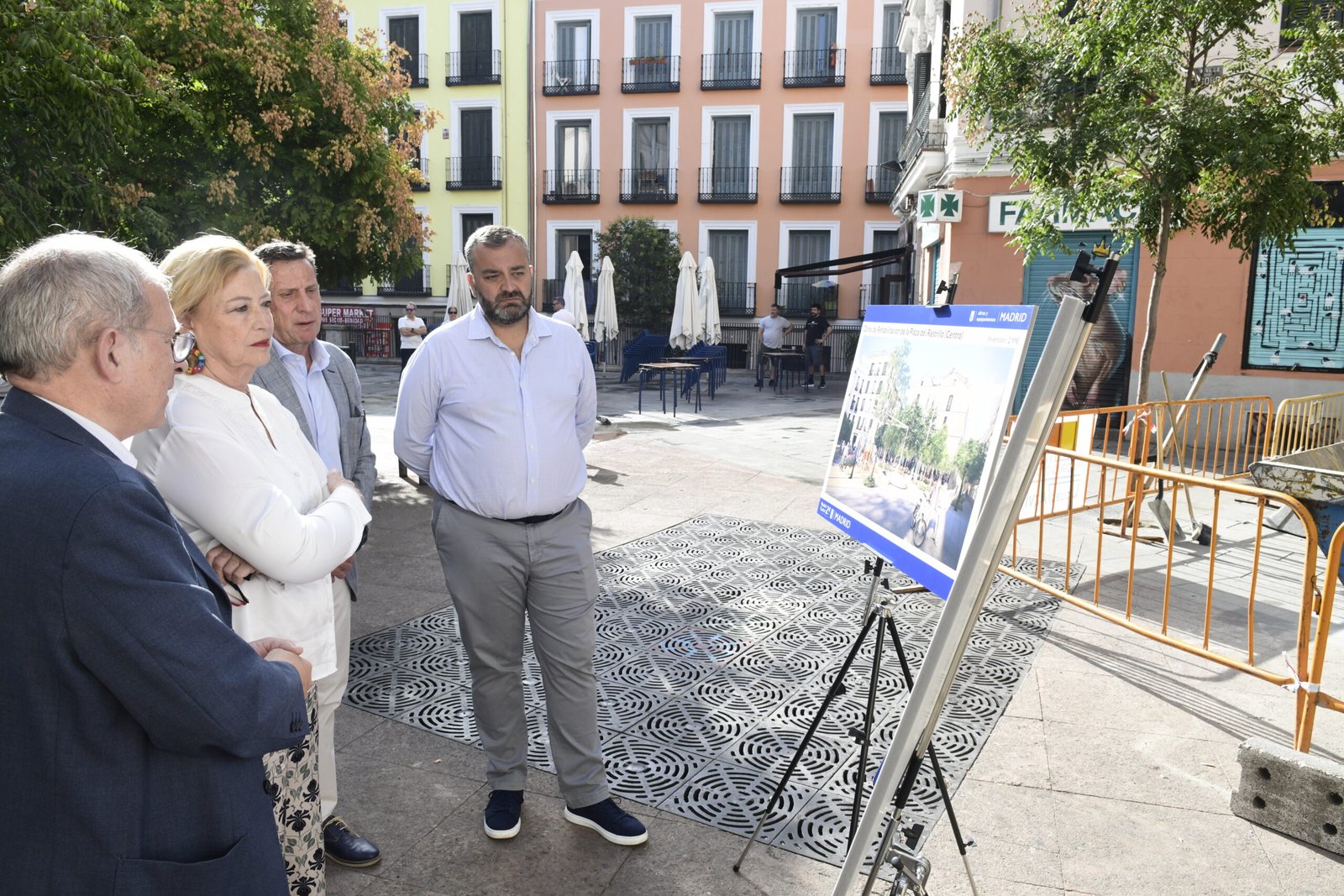The Official Gazette of the Community of Madrid has today published the decree of the delegate for Urbanism, Environment, and Mobility, Borja Carabante, with the call that regulates the authorizations of tourist buses in the capital. This initiative establishes three new routes for this service and includes the special itinerary provided during the Christmas period. The project to renew this service is part of the new Tourism Mobility Strategy that the City Council is beginning to implement in the capital.
During 2024, a study was conducted on the impact of tourist buses on traffic, revealing that one of these vehicles circulated every ten minutes (at certain times, every seven and a half minutes) in key areas such as Gran Vía, Paseo de Recoletos, or Atocha roundabout. Some of the tourist routes were operated on already congested roads. This situation, with four companies offering a total of ten routes, directly affected, for example, the city’s bus lanes, which were occupied more than 10% of the time during the day by these buses (this percentage rises to 20% in locations like Gran Vía, Atocha, or the vicinity of Puerta de Alcalá). This led to more than 10% of EMT Madrid buses having to wait or stop incorrectly because their stop was occupied by a tourist bus.
From now on, three routes are defined to offer a quality service to tourists without saturating public space and without allowing more than one route to circulate in the same direction on a road.
After studying the impact and necessity of this service on city mobility, the Madrid City Council has determined that three companies will be responsible for tourist buses. This aims to reconcile the use of public space by Madrid residents with the benefits that collective urban tourist transport services bring to the city’s economy and mobility. The decree emphasizes that having a sufficient number of authorized companies with minimum quality requirements provides a greater guarantee of continuous service provision in a sustainable manner, establishing a list of potential awardees in case any of the authorized companies suspend their activity or have their authorization revoked.
Each of the three authorized companies must pay an annual fee of 250,000 euros to the Madrid City Council. The authorization will be valid for a period of four years. The authorized companies must demonstrate a minimum annual turnover of one million euros and must have provided tourist bus services in cities with at least 500,000 inhabitants in the last three years.
Three Itineraries: Historical, Bernabéu, and Alcalá-Ventas
The specifications establish three routes for service provision throughout the year, with their starting point (regulation stop) at Plaza de Cánovas del Castillo (Neptuno) and an additional route for Christmas, starting at Calle de Alfonso XII. Each operator must provide these routes as a mandatory service.
Route 1. Historical Madrid
– Itinerary: Paseo del Prado, Alcalá, Gran Vía, Princesa, Fernández de los Ríos, Arcipreste de Hita, Meléndez Valdés, Romero Robledo, Paseo de Pintor Rosales, Ferraz, Irún, Arriaza, Cuesta de San Vicente, Paseo de la Virgen del Puerto, Paseo de la Ciudad de Plasencia, Ronda de Segovia, Puerta de Toledo, Gran Vía de San Francisco, Bailén, Plaza de la Armería, Bailén, Carrera de San Francisco, Plaza de la Cebada, Toledo, Colegiata, Plaza de Tirso de Molina, Magdalena, Atocha, Plaza del Emperador Carlos V, and Paseo del Prado.
– 14 stops: Plaza de Neptuno, Cibeles, Gran Vía, Plaza de España, Moncloa, Teleférico, Templo de Debod, Puerta San Vicente, Cuesta de la Vega, Puerta de Toledo, Palacio Real, Plaza Mayor, Zona de las Letras, Paseo del Prado.
– Distance: 14 kilometers.
– Estimated route time: 85 minutes, under normal traffic conditions on a working day.
– Departure and return: Plaza de Neptuno.
Route 2. Modern Madrid: Castellana-Santiago Bernabéu
– Itinerary: Paseo del Prado, Plaza del Emperador Carlos V, Avenida de Ciudad de Barcelona, Alfonso XII, Antonio Maura, Plaza de la Lealtad, Paseo del Prado, Paseo de Recoletos, Paseo de la Castellana, Plaza de Lima, Paseo de la Castellana, Plaza de Gregorio Marañón, Miguel Ángel, Glorieta de Rubén Darío, Paso Elevado de Serrano, Plaza de la Independencia, Alcalá, Sevilla, Carrera de San Jerónimo, and Plaza de las Cortes.
– 10 stops: Plaza de Neptuno, Cibeles, Colón, Museo de Ciencias Naturales, Santiago Bernabéu, Nuevos Ministerios, Museo Sorolla, Serrano, Puerta de Alcalá, and Canalejas.
– Distance: 11 kilometers.
– Estimated route time: 70 minutes under normal traffic conditions on a working day.
– Departure and return: Plaza de Neptuno.
Route 3. Present Madrid: Alcalá-Plaza de Toros
– Itinerary: Calle de Felipe IV, Alfonso XII, Plaza de la Independencia, Alcalá, Roberto Domingo, Avenida de los Toreros, Julio Camba, Alcalá, Goya, Plaza de Colón, Génova, Sagasta, Carranza, San Bernardo, Plaza de Santo Domingo, Jacometrezo, Gran Vía, Alcalá, Paseo del Prado, and Plaza de Cánovas de Castillo.
– 10 stops: Neptuno, Puerta de Alcalá, Casa Árabe, Goya, Plaza de Toros, Colón, Bilbao, Malasaña, Callao, and Gran Vía.
– Distance: 12 kilometers.
– Estimated route time: 75 minutes under normal traffic conditions on a working day.
– Departure and return: Plaza de Neptuno.
Christmas Route
– Itinerary: Calle de Alfonso XII, Avenida de Ciudad de Barcelona, Plaza de Carlos V, Paseo del Prado, Alcalá, Virgen de los Peligros, Gran Vía, Cibeles, Alcalá, Velázquez, Goya, Paseo de la Castellana, José Ortega y Gasset, Serrano, Alfonso XII.
– No stops.
– Distance: 7.8 kilometers.
– Estimated route time: 60 minutes under normal traffic conditions on a working day.
– Departure and return: Calle de Alfonso XII.
Calendar, Frequency, and Vehicle Conditions
The equipment and maintenance of the stops (shelters and supports) will be the responsibility of the Madrid City Council. The different companies must keep the information installed at the stops in good condition and up to date, which will also include a reference to the service’s website, as well as its corresponding QR code for the advance purchase of tickets. Users without a ticket who are waiting must purchase it in advance to avoid unnecessary delays that hinder bus circulation, as buses without their corresponding ticket will not be allowed. Boarding and alighting passengers will only take place at authorized stops, and buses must remain at these stops only for the time necessary for passengers to board and alight, with vehicles expressly prohibited from waiting at these locations.
The three routes whose service is provided throughout the year, except on December 25th and January 1st, will have a mandatory minimum schedule between 10:00 and 18:00, extendable from 9:30 to 20:30. The mandatory frequency per operator and per route will be a minimum of 60 minutes and a maximum of 15 minutes. This means that no more than one bus from the same company can pass on the same route with less than a 15-minute difference. It should also be avoided for buses from different operators to start or operate any part of the route together, in which case they should keep a distance to avoid congesting traffic. The Madrid City Council may regulate the schedules and departure intervals of operators to improve mobility. The fare must be significantly higher than that of public transport, in accordance with articles 128 to 130 of the Regulation of the Land Transport Law (ROTT).
Regarding the Christmas route, the service will be provided from November 23rd to January 7th, between 6:00 pm and 10:15 pm (last departure). As with the three annual routes, the maximum frequency per operator will be 15 minutes, and the fare must be significantly higher than that of public transport, as required by state legislation.
The buses will have ZERO emission or ECO environmental classification, and 25% of the fleet must be electric within the first year of operation. Buses cannot exceed 16 years of age during the four-year authorization period. They will be double-decker vehicles, with the upper deck uncovered and a foldable canopy for rainy or other weather conditions, accessible to people with reduced mobility, and equipped with a ramp.
They must be equipped with georeferenced audio guides in ten languages (Spanish, English, French, German, Italian, Portuguese, Mandarin Chinese, Japanese, Korean, and Arabic) and a public address system. Authorized companies will have an integrated system for sales, payment, and validation to fully record service demand. Additionally, each expedition (bus) will have a different tour guide from the driver.
Interested parties must submit their applications within 30 calendar days from the day following the publication of the call in the Official Gazette of the Community of Madrid (BOCM). The service will be provided by the top three companies with the highest scores, and the Madrid City Council will notify each of them of their authorization. The established period for providing the service will begin the day after receiving the authorization, with a maximum of three calendar months from the day following this notification. /



